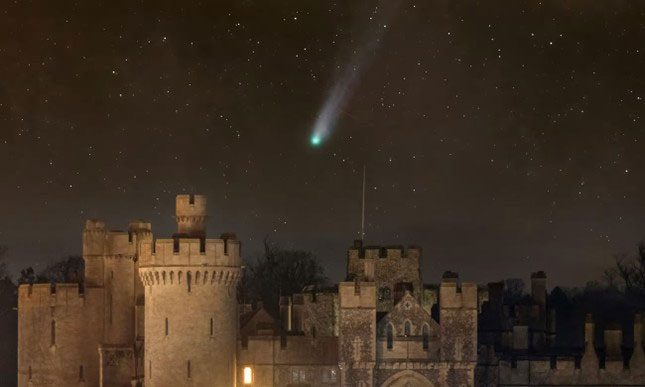According to astronomers, a comet larger than Mount Everest is expected to be visible to the naked eye in the coming weeks as it moves deeper into the Solar System after more than 70 years.

Comet 12P/Pons-Brooks appearing next to Vega, a star in the northern constellation Lyra.
12P/Pons-Brooks is a Halley-type comet – meaning it will only appear once or possibly twice in a lifetime. It orbits every 71.3 years and will come closest to the sun on April 21. Although some reports suggest that 12P/Pons-Brooks was discovered in the 14th century, it was named after the French astronomer Jean-Louis Pons, who officially recorded it in 1812, and the American-British astronomer William Robert Brooks, who tracked it in its subsequent orbit in 1883.
With an estimated nucleus diameter of about 30 km, it is classified as a cold comet, meaning it erupts dust, gas, and ice while internal pressure builds up and heats it. An outburst last year caused 12P/Pons-Brooks to brighten a hundredfold, earning it the nickname “The Devil’s Comet”, after the cloud of fog surrounding it formed a horn-like shape.
While this green comet has been spotted in the night sky, experts believe it will become even brighter in the coming weeks. “The comet is expected to reach a magnitude of 4.5, which means it can be seen from a dark location. The comet will move from the constellation Andromeda to Pisces. Because it passes near bright stars, you will find it easier to spot on certain days. Notably, on March 31, 12P/Pons-Brooks will be just 0.5 degrees away from the bright star Hamal,” said Dr. Paul Strøm, an astrophysicist at the University of Warwick (UK).

Comet 12P/Pons–Brooks over Arundel Castle, England.
However, Dr. Robert Massey, the deputy executive director of the Royal Astronomical Society (UK), noted that even if the comet becomes brighter, it might still be difficult to see, adding that basic instruments like telescopes would be very helpful. Currently, the best views will be from the northern hemisphere. Dr. Massey advises those wanting to observe the comet to go outside on a clear evening and look towards the west-northwest after sunset. “You should avoid fog, moonlight, and light pollution.”
According to Strøm, comets, like asteroids, are often considered untapped resources of the Solar System, providing insights into its formation conditions. Massey mentioned the excitement surrounding the sighting of a comet that has only been observed a few times since its official discovery. “It’s quite fascinating for us to reflect on,” he said.


















































